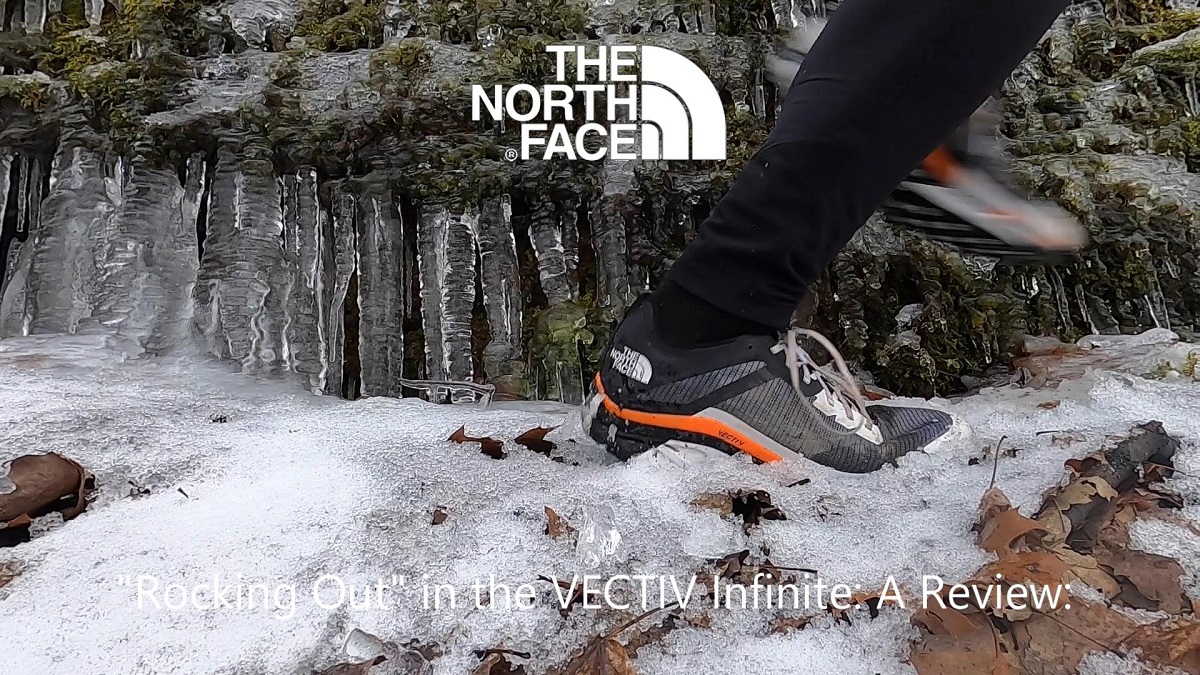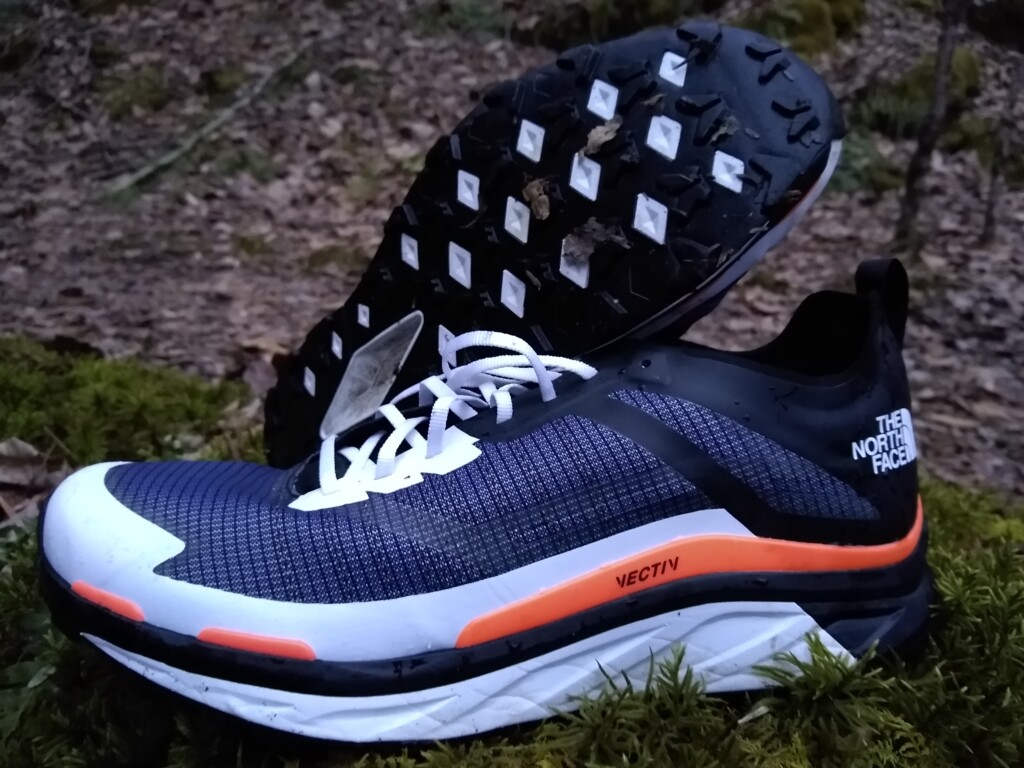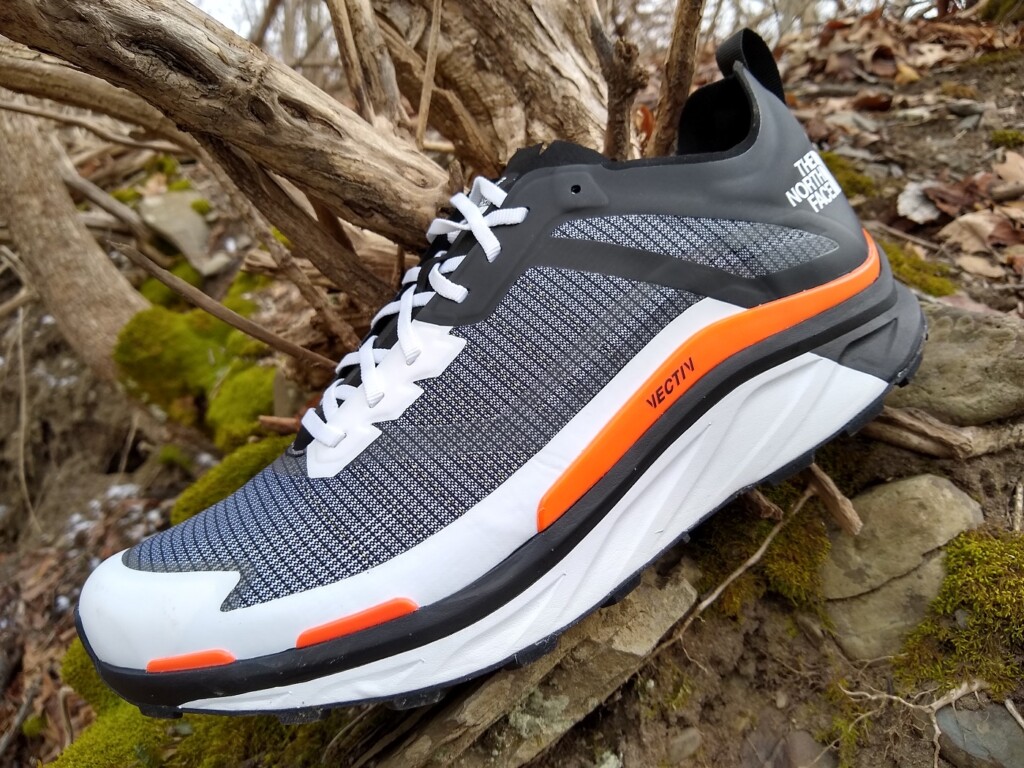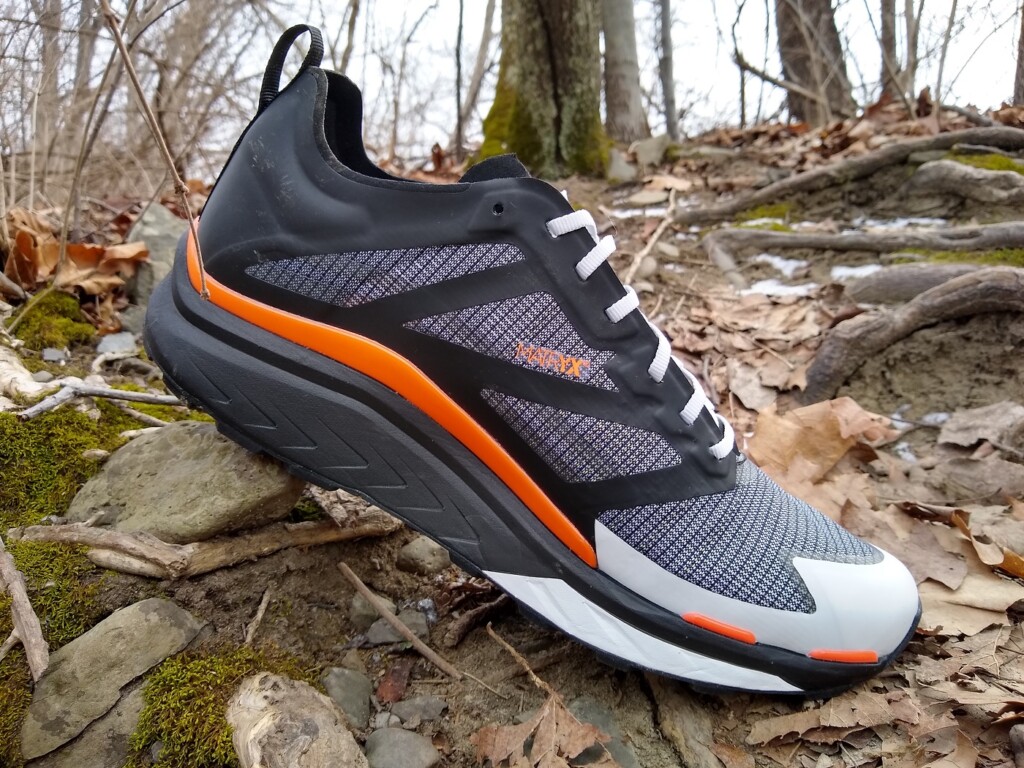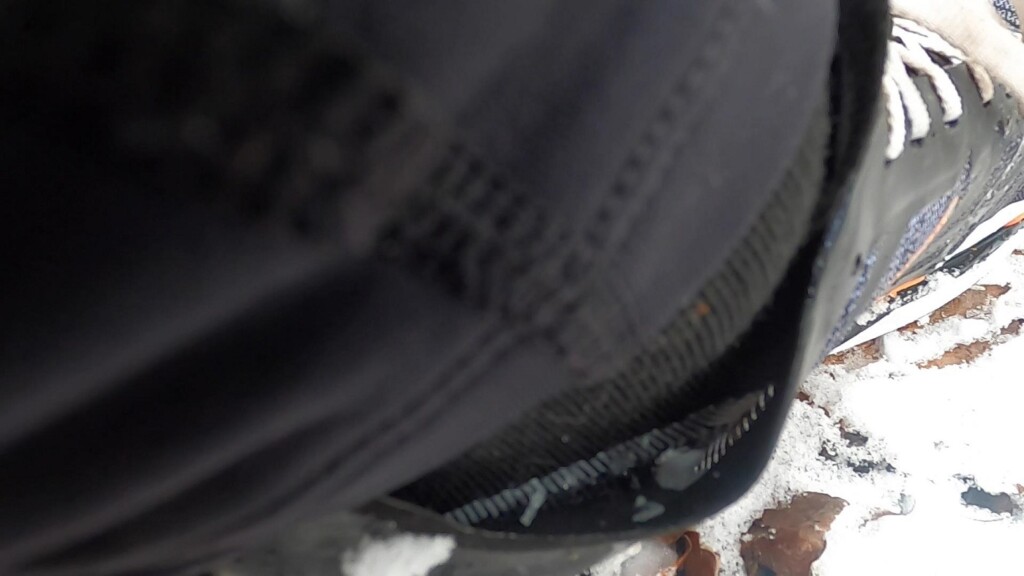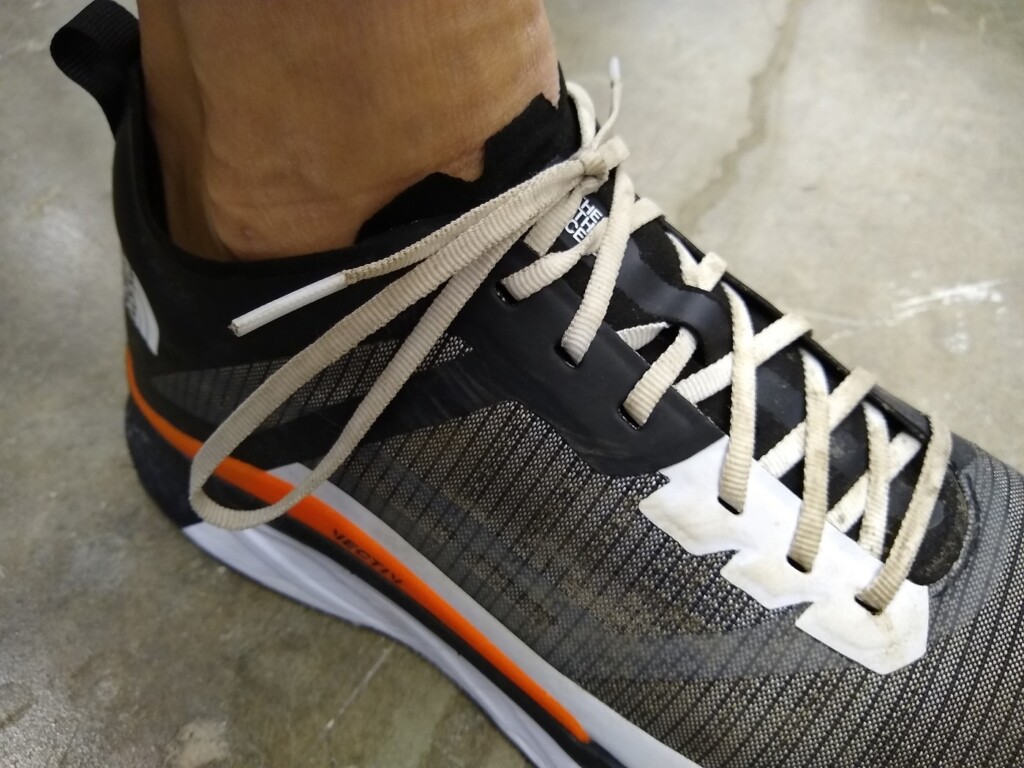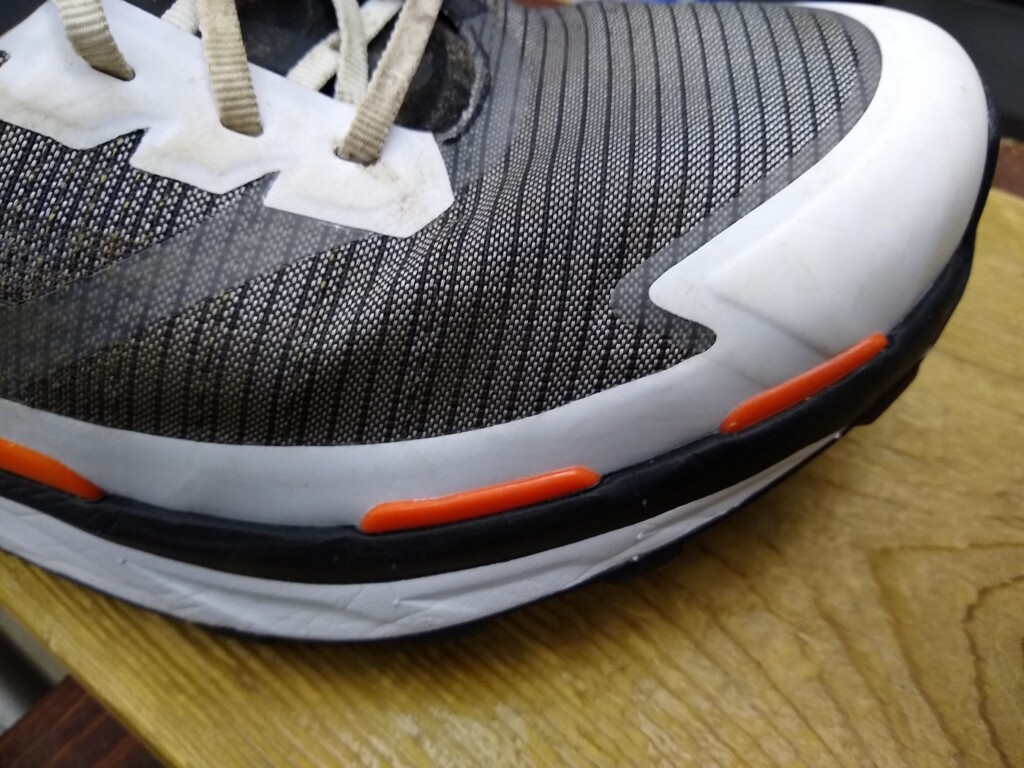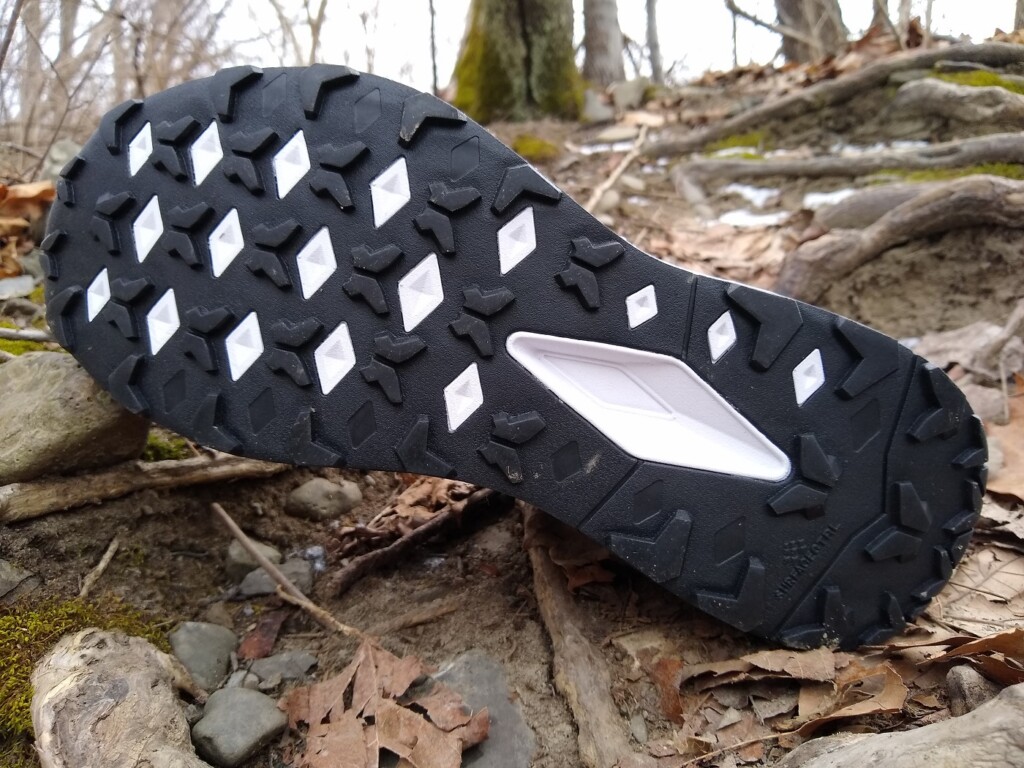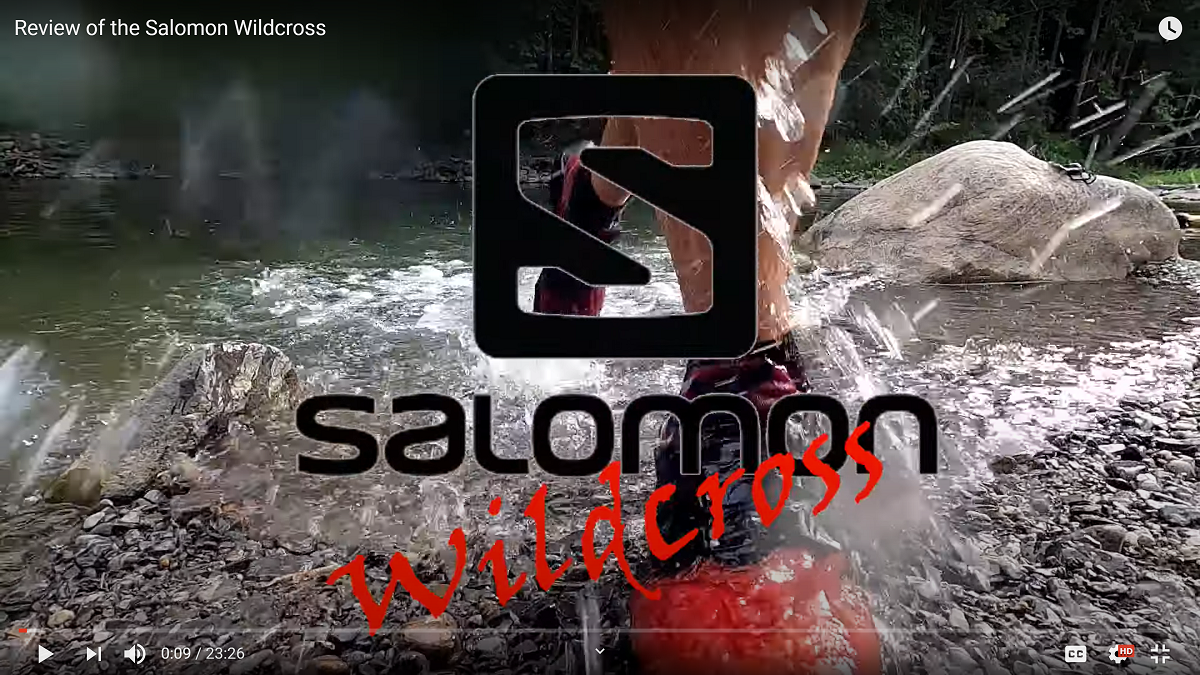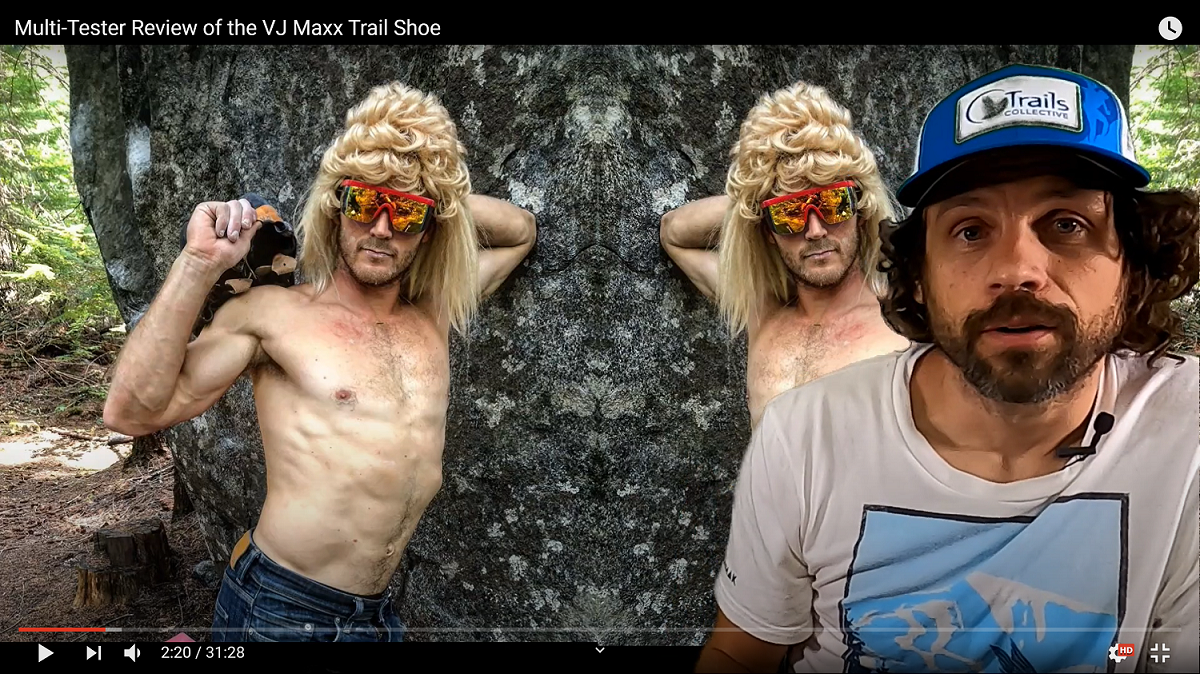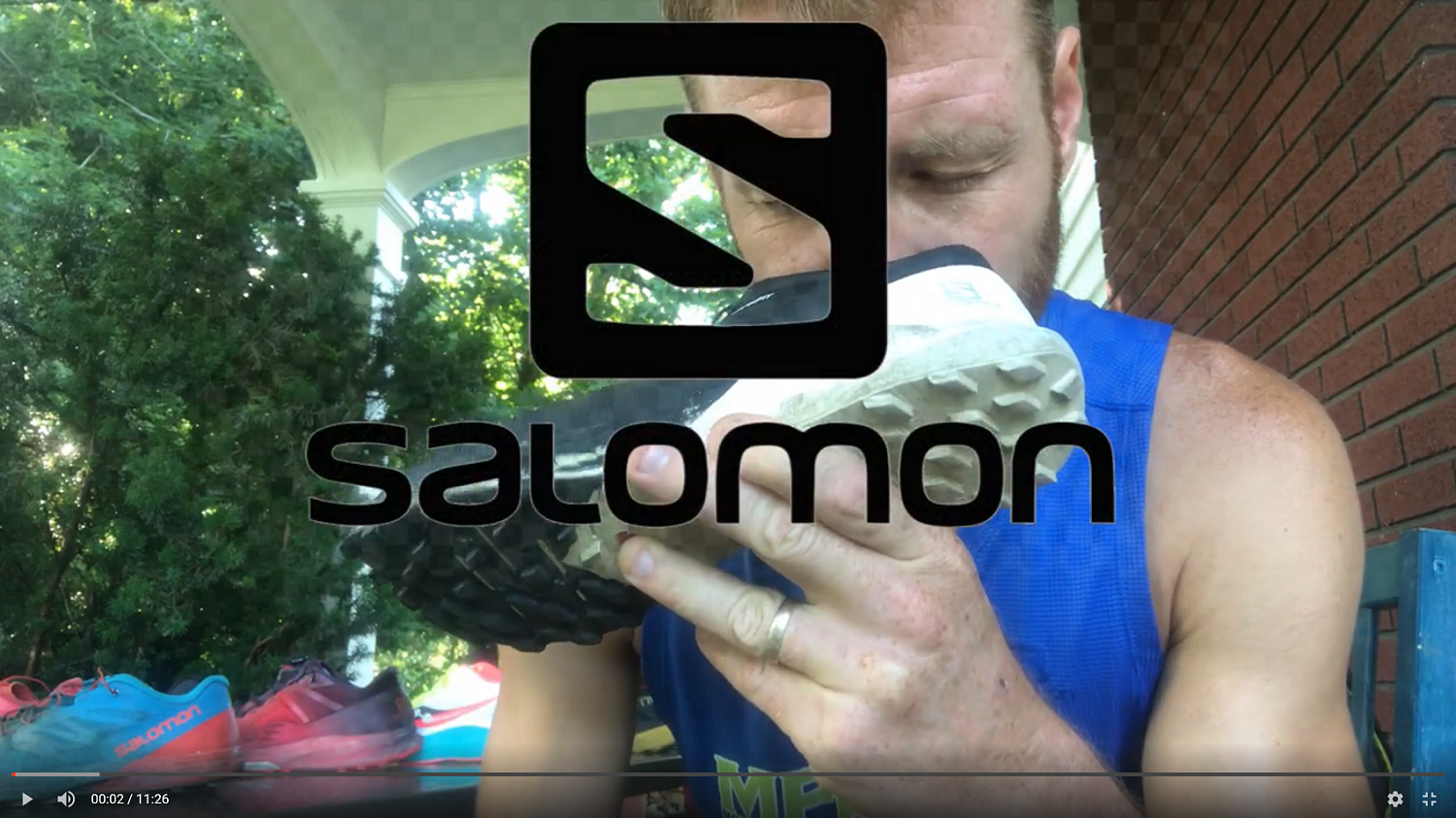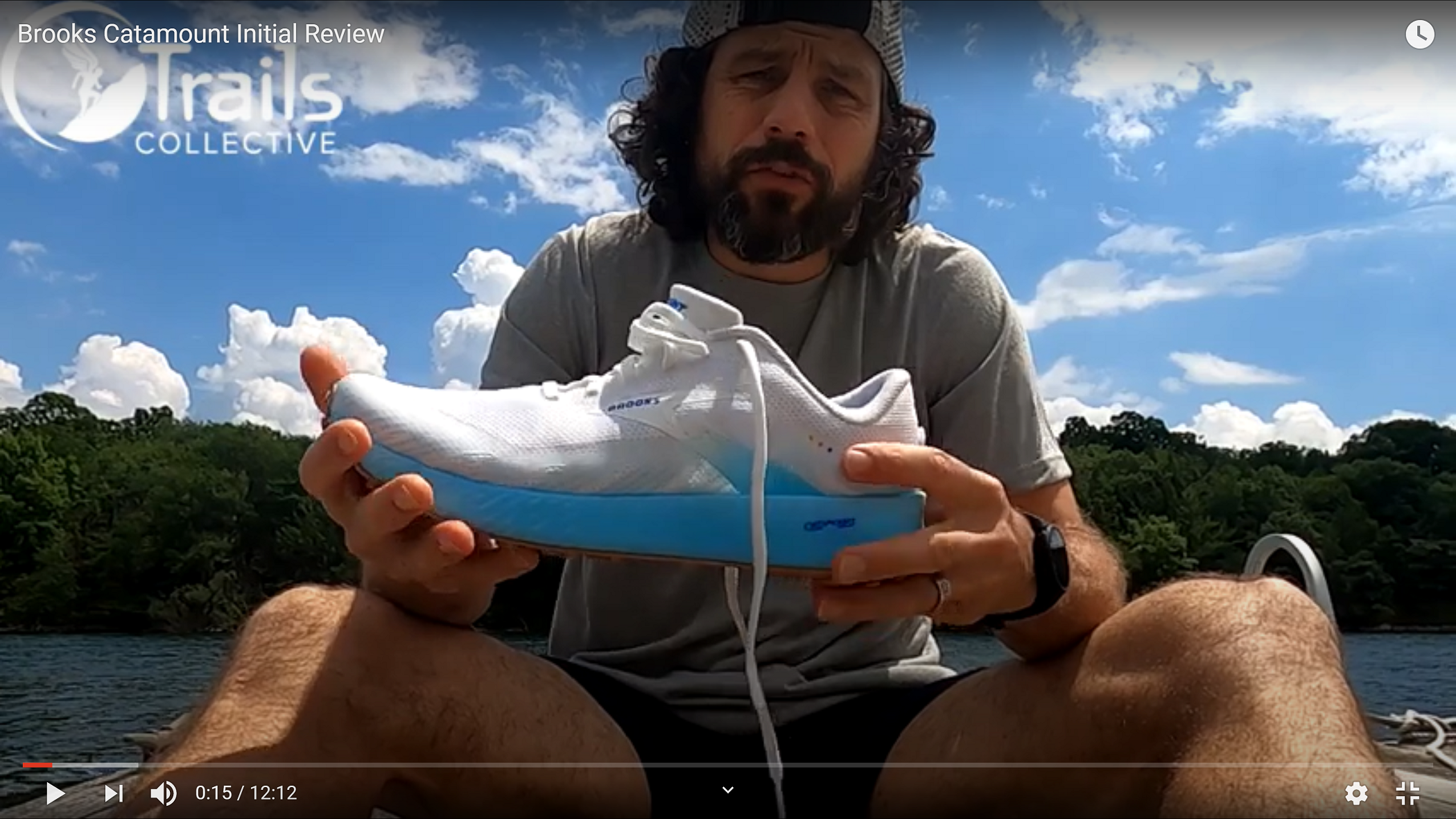The North Face Vectiv Infinite: Review
The North Face VECTIV Infinite
The VECTIV Infinite is designed to be comfortable over long, fast miles. Its plate is considered balanced, and stacked atop a rocker midsole geometry. The Matryx upper is designed to take a beating and the outsole is sticky over variable surfaces. Whereas the North Face has traditionally failed in bringing premier trail running shoes to the table, they’ve committed time and resources to turning that page. Where might they have tried too hard, or placed tech stretches, or design, over function? And where have they succeeded in a creating a shoe that will be embraced in the space. Let’s dig into the materials, design, and any improvements needed starting from the top and moving down.
Specs
Price: $169
Weight: 10.8 oz (M) / 9.6 oz (W)
In-House Measure of Stack Heights:
Insole: 3.5mm
Lasting: 2.5mm
Plate: 2.5mm
Midsole Stack: 19mm / 13mm
Base Outsole Rubber: 2mm
Outsole Lugs: 3.5mm
In-House Measure of Combined Stack: 33mm / 27mm
*North Face Listed Stack: 25mm / 19mm (Which, I believe must reflect the insole through to midsole depth)
Drop: 6mm
Fit / Last: Fits true to size in length with a relatively straight-lasted design
Upper
Material & Design
The VECTIV Infinite’s upper is pretty slick. It uses a kevlar-woven Matryx, a material I first experienced and reviewed as used in Salomon’s S/Lab Cross. The Aramid fiber (one tradename is Kevlar) provides a thin, flexible fabric offering exceptional durability. Welded TPU overlays provide additional structure on off-camber pitches. A rubberized toe guard extends to the rear of the shoe for abrasion resistance and support to counter pushing out over the base. The gusseted tongue is thinly padded, with a low-cut next to skin upper where it meets the ankle. Padded inlays with thin material above replaces a traditional heel collar and there’s an absence of an internal heel cup.
Function
I really like the Matryx fabric. It’s thin, flexible, woven tightly enough to keep out dirt and debris, but porous enough to breath. While I don’t have more than a hundred miles into the VECTIV Infinite or S/Lab Cross, so far, the fabric doesn’t show signs of degradation. Another benefit is that Matryx is hydrophobic. You can feel water immediately drain off the fabric after submersive water crossings.
The North Face have also done a great job with the welded overlays, flexing enough to not have pinches, and reinforcing the vamp of Matryx to handle off-camber pitches pretty well. The heel collar is comfortable, and the spot-padded tongue feels smooth over the instep. But, there are shortcomings.
Improvements Needed
Heel Collar
The thin and spot padded heel collar feels great, but the design leaves a collared gap around the malleoli (ankle bones). The padding around the area of the Achilles is nice, but the collar above it in effect causes any debris dropping in around the ankle to be stuck in that gap. Although the pads won’t tightly compress around the ankle bones or Achilles, with a slight gap left, debris would have an easier time bouncing out if the collars weren’t there to keep it in. It’s frequent on runs that I have to stop and flick snow or gravel out of that space. In this case it would seem they were placing superficial feel, style, and tech over actual wear-tested function and feedback.
Rubberized Guards
The rubberized toe cap, which extends around the shoe, handles abrasion well, is soft, and pliable. However, they act to negate one of the highlights of the upper which is the hydrophobic properties of the Matryx fabric. Once the water is in, and quickly drains off, it literally has nowhere to go. Without perforations in the rubberized 360 degree guards, or through the midsole, it’s literally locked in like a pool. This drawback is further magnified by the Ortholite insole which acts like a sponge in absorbing and hanging onto water for some time.
The Tongue
I actually like the tongue. North Face did a great job of spot padding, soft, minimal webbing, and a thin ankle transition. They also accounted for historical hotspots by notching it at the top for greater pliability at the ankle. But, knowing the track record of those designs, there will be some individuals where the tongue doesn’t come up high enough. If someone needs to use the upper most holes for a heel lock, the laces will come very close if not abrade the instep as the rear-leg toes off in a position of max dorsiflexion. There’s going to be a polarized love it or hate it relationship with the VECTIV Infinite tongue.
VECTIV Plate
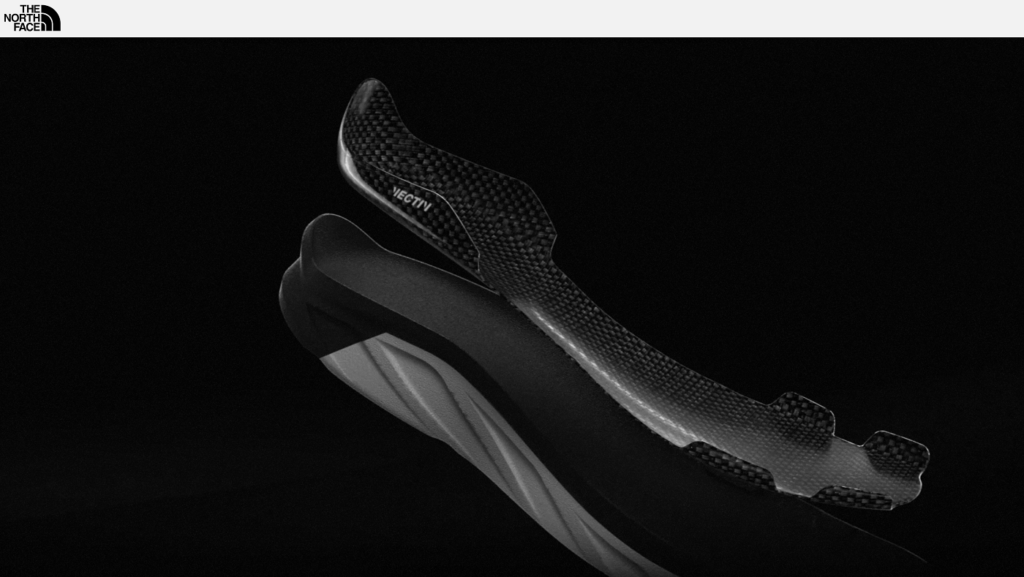
Material
The VECTIV 3D plate used in the VECTIV Infinite is made from PeBax (thermoplastic). PeBax in their VECTIV trail lineup comes in a bit heavier but not quite as propulsive in design, or as durable, as the Flight VECTIV’s carbon plate. It comes in 20% lighter, with more propulsion, and durability however than the VECTIV Enduris’ TPU plate.
Design
The 3D plate is shaped with tabs that wrap up and over the upper in the rear through midfoot, with two separated in the forefoot. Those tabs offer a two-part function. One is in the configuration of a 3D design or shape to increase its durability in lessen it packing out. The other, in response to their athlete testing, is to aid in keeping the foot mechanically stable over the base of the shoe over technical terrain.
Function
It’s tough to tease out the plate from the overall rocker package. The shoe does have a balanced underfoot feel, despite having an aggressive rocker design. That must be in large part to the plate versus simply the midsole foam. I’m looking forward to the Flight VECTIV, which should be arriving shortly, to see if there’s a felt difference between the Carbon and Pebax materials, and propulsion factor.
Improvements to Consider
Plate Design
The 3D design of the VECTIV Infinite plate no doubt contributes increased resiliency to the materials. The wrapping of that plate up onto the upper in the heel to midfoot no doubt also contributes to increased off-camber stability. However, unless someone has a narrow toeline, the exterior tabs in the forefoot could be a nuisance if not problematic over ultra distances.
For me, I have a stubby 5th toe (thanks grandma) and am sensitive to shoes that cut too aggressively in on the outside in the toebox. On steeper and technical descents in the Infinite, my 5th toe pushes out on the rubberized toeguard. The toeguard itself would be enough to contain the motion. What I end up feeling though is my 5th toe pushing into the plastic tab. While it hasn’t caused bruising or abrasion, I do wonder about the impact of ultra distances with significant elevation loss.
Insole
Materials and Alternatives Needed?
The insole shouldn’t really need its own line in a review. However, several companies are opting to use Ortholite Insoles including in their trail models. As I’ve mentioned in reviews of the Topo Ultraventure Pro and MTN Racer reviews, I believe this to be a bad choice in trail models. While Ortholite insoles add additional and durable cushion for slip-on comfort, they’re like sponges in the water. In the Topo trail models, this is somewhat mitigated by water drainage perforations in the rubberized guard laminates. In the case of the VECTIV Infinite, the downside of the sponge now inserted into the shoe, is further magnified by the full surround guards keeping water in. The combination just destroys any benefit to the hydrophobic Matryx upper in instances of submersion.
Midsole
Material
Dual Density EVA with upper black layer having a slightly firmer durometer of 55. I’d guess this dovetails in offering a bit more responsiveness underfoot, and dovetails with the plate. The lower white layer reports in with a softer durometer of 45 for shock absorption and conforming to variable terrain.
Design
The rocker geometry of the midsole / plate combination is the most remarkable feature of the VECTIV series. The rocker design is more aggressive than road or trail shoe I’ve worn with the closest comparisons being in the Skechers lineup. As you can see in the image below, I’m able to slide paper in from the front and back clean through to the center two lugs of the VECTIV Infinite. This creates a focal pivot point of only about 35mm or 1.5 inches. Any immediate question of whether I’d really feel the rocker design before trying them on was immediately dispelled. The North Face definitely went all-in on the design concept.
Function
My Feelings on Rocking Out
I generally have negative feelings towards rocker design. While some people are born with physiological impairment, feet have evolved very specifically to work with the full mechanical chain. Further, they are amazingly designed for movement over variable terrain. Rocker mechanics basically negate the anatomy and physiology of our body, specifically in the feet. The apex of the VECTIV rocker design closely mirrors, in an inverse relationship, the apex of the medial and lateral longitudinal arches in the foot.
Those arches are critical for adaptation to variable terrain, accommodation of impact, and including sequential loading into energy return with other components in the foot. You can show me all the fancy research you want about how you think you’re increasing mechanical efficiency with a rocker design, but, sorry feller, I aint buyin it. There are functional tradeoffs somewhere in the equation, or we’ll need a thousand years or so to evolve around the design “improvement”.
A Case Against
On trails we’re constantly negotiating variable terrain. Specifically there’s stepping on, and rolling over, rocks and logs. In one of my first runs in the VECTIV Infinite, I stepped on an otherwise unremarkable log. My foot’s point of contact was a bit behind the fulcrum of the Infinite’s rocker. In a non-rockered design, I would have continued to move forward and roll over. Instead my lower leg had to allow for an initial drop down of the heel as I was on the backside of the fulcrum, before accommodating the load, and engaging the foot and calf muscles to re-engage to propel me up and over. In that moment I thought immediately of a frame from this ad which I had just seen from ON Running.
In the ON ad, the individual running in that scene was no doubt being asked to do various sprint efforts wherein she was striding outside of her base of support. With their camera focused in on the shoe, they captured a forced and dysfunctional pattern which, if setup in trail environments, could lead to injury. It’s a simultaneous eccentric loading requirement of the calf to lower the heel, with a concentric contraction to fire back up onto the toes. The context is sending conflicting and potentially injurious requirements to the body. While it’s not too far outside of what may happen in any shoe, having a fulcrum underfoot changes the equation.
A Case For?
I’m not sure that I’m making a case to support rocker geometry, but I haven’t had any aches or pains come from out-of-the-box runs. What I can say is that it does feel interesting, smooth, if not fast. For those intrigued by plates and rockers, the VECTIV series may be one to get on your feet.
Outsole
Material
The VECTIV Infinite’s outsole is comprised of a proprietary 40% plant-based rubber compound with high sticky / durability coefficient. The outsole trade name and configuration is SurfaceCTRL. The plant or bio-injection is designed to make the rubber more biodegradable once it shaves off and grinds into the dirt. In our testing of most of the major outsole rubbers, SurfaceCTRL held its own. It’s not the stickiest compound on the market, but it’s a pretty solid second tier.
Design
The majority of 4mm lugs have a butterfly shapes for multi-directional grip, with center grooves, I’m guessing, to serve as water channels. The perimeter lugs have more of a “V” shape for both pulling back on the ascent, and braking resistance on the descents.
Function
The rubber is fairly soft, and I’ve nearly shaved off the rear lug with heel strike / abrasion. With the exception of Inov8’s Graphene (as reviewed in the TerraUltra G 270), I’ll shave off nearly all outsoles in that spot with any amount of road running. The outsole lug design has indeed proved versatile, and the outsole rubber relatively sticky over even slick surfaces. And, I do like and value the eco angle of bio-infused rubber.
For a glimpse into how the SurfaceCTRL stacks up against some of the top outsole rubbers on the market and trails, check out our deep dive comp here.
The North Face’s SurfaceCTRL held its own.
The Takeaway & Who’s It For?
I believe the North Face has done a great job in moving their trail shoe materials and design into a tier worthy of their brand intention. While there are design flaws which should be improved for round two, and it’s landing at a high price point, the VECTIV Infinite is a fast and fun package. For a trail runner looking for a versatile and grippy outsole, the SurfaceCTRL and lug configuration works well. The rocker design complete with plate succeeds in a smooth yet stable platform and should capture the attention and interest of those following the plate battles. And, the upper is a thin slick design which uses one of the most durable fabrics on the market. North Face, it’s about time you arrived to the starting line. Good to have you in the mix.


